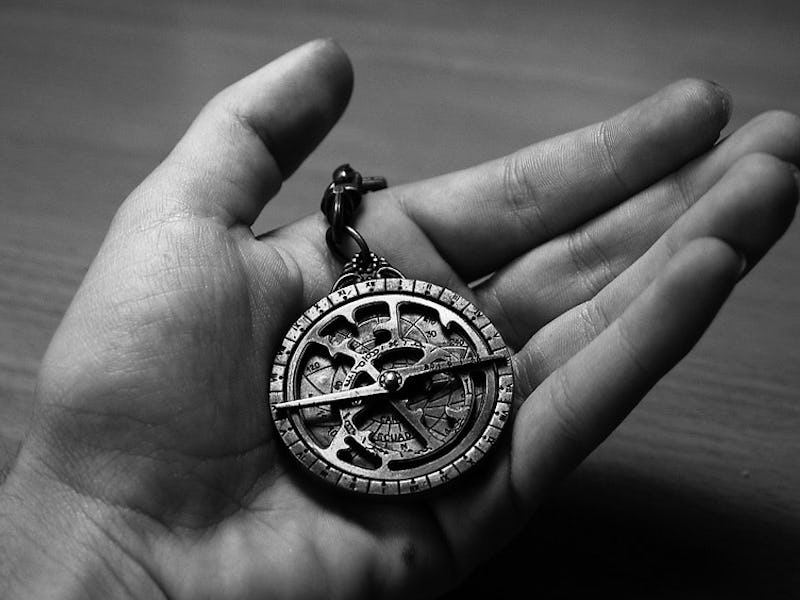How to Build an Astrolabe Like John B. McLemore From 'S- Town'
It's the universe in the palm of your hand.

John B. McLemore restored antique clocks in Woodstock, Alabama — or Shit Town, as he liked to call it. Whether he realized it or not, McLemore, the curious hero of the hit podcast S-Town, was dabbling in a quest pursued by humans since the dawn of civilization: building a device that could keep track of time.
Old clocks are intricate pieces of engineering, able to keep time using pendulums, springs, or weighted pulleys. But the human fascination with tracking the passing hours has been around much longer than clock building technology, and people came up with amazing ways to do it. Before there was the clock, there was the astrolabe — a simple and ingenious mechanism with which you can tell not only the time but one’s place in the universe. McLemore made those, too.
Astrolabes are, in essence, a model of the sky and Earth small enough to hold in your hand. The technology has been around for more than 2,000 years. They work thanks to the concept of stereographic projection — imagine the stars in the night sky as lights on a spherical plane around the Earth, projecting through a pinhole onto a flat surface.
The device works much like a computer. You input coordinates that relate to your current position in space and time, and an innumerable amount calculations suddenly become possible. For centuries, astrolabes were popular among Muslim societies to keep track of prayer times and the direction of Mecca. Hundreds of other applications were devised, including those related to astronomy, astrology, mathematics, and geography.
Finding the time is relatively simple, though not so simple as looking at a clock or watch. Use the built-in inclinometer to gauge the angle of the sun or a bright star in the sky. Combined with the date and your position on Earth, you can match your model universe to the one you observe in the world and determine the time at which you would see that celestial object at that altitude.
It sounds complicated, but you don’t have to understand the math or the astronomy that goes into an astrolabe to use one. Like plugging functions into a calculator, it simply gives you the correct answer.
Making an astrolabe doesn’t need to be complicated, either. You can print and assemble your own at home with a few design pages, some paper or card stock, and a sheet of transparency.
They are fundamentally made up of several parts. The mater, or mother, is the disc-shaped casing that holds the whole thing together, and marks off times of the day around its border like a clock. Inside, a spinning disk called a plate or tympan that shows the position of the stars as visible from a particular location on Earth. On top of that, the rete tracks the motion of the sun, moon, and planets. A pointing device allows for lining up coordinates and taking angle measurements.
At the height of their popularity, the quality of astrolabes would have varied significantly, with paper models for the daily use of school children, wooden versions for practical scientific use, and highly ornate pieces of metal craftsmanship for the fabulously wealthy.
It’s that tradition of craftsmanship that McLemore continued with his fabrication of astrolabes. A smartphone might be able to do all the work of an astrolabe and more, but a well-made astrolabe will run for thousands of years without access to a power source, and will remind you every time you check the time of your place in the universe.